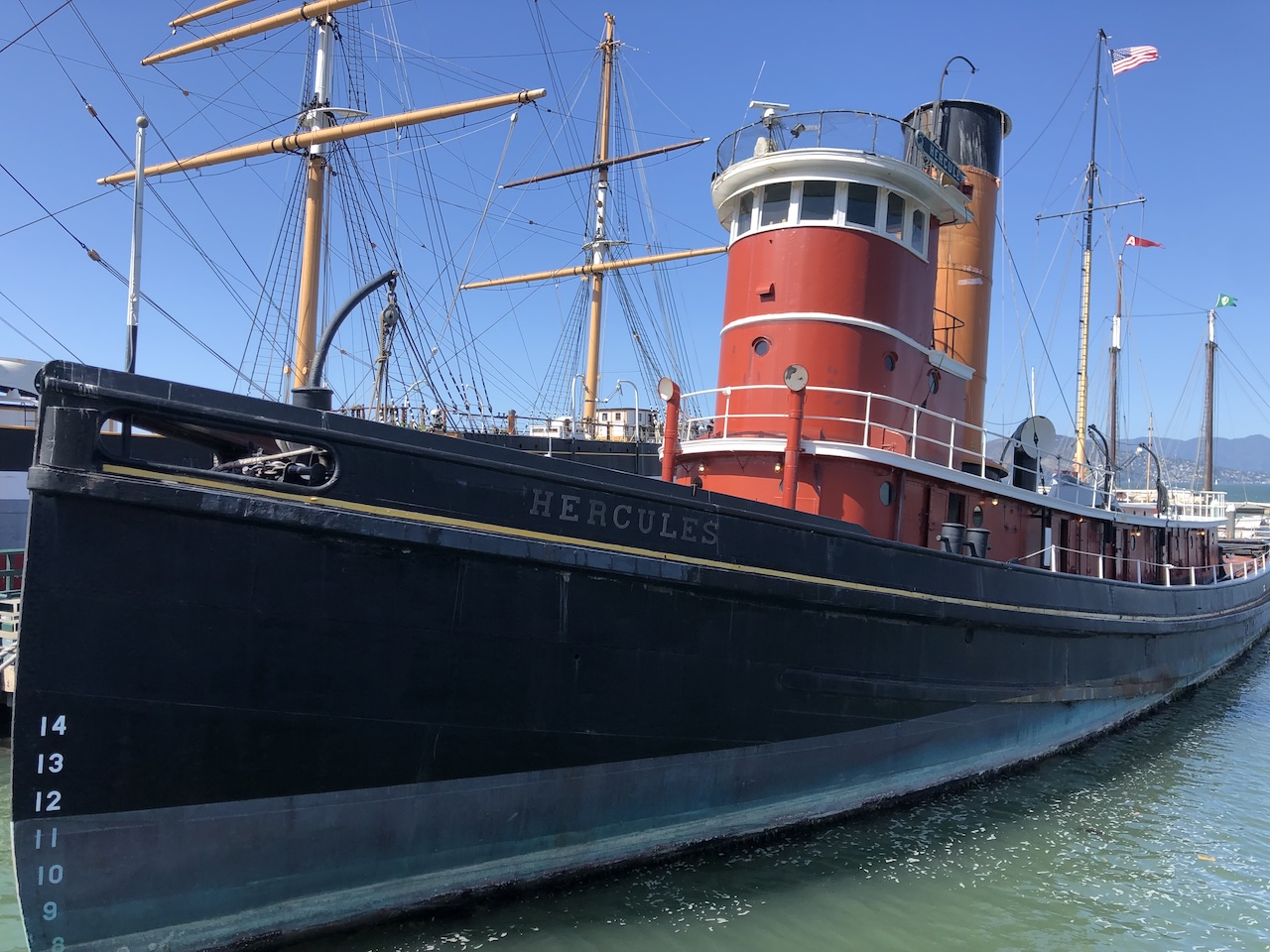Hercules, a 1907 Steam Tugboat

You can smell the history in her hull — iron, oil, and a touch of varnished mahogany. Once the hardest-working tug on the West Coast, Hercules was never built to be beautiful, but beauty is often found in purpose. And this 151-foot icon is overflowing with it.
A Beast Born to Work
Hercules was born in Camden, New Jersey, crafted by John H. Dialogue & Sons — think of it as the Rolls-Royce of American tugboat builders. She was no dainty harbor taxi. She was built for the open ocean, towing full-rigged sailing ships, barges, and log rafts through swells and storms. Her first act? Towing her sister ship Goliah 14,000 miles around Cape Horn to San Francisco. A flex, by any standard.
With her triple-expansion steam engine, riveted steel hull, and minimalist profile, Hercules was a fusion of raw utility and industrial grace. She didn’t shout. She thrummed.
Muscle with a Mission
After arriving in California, Hercules quickly became the Pacific’s power broker. She towed caissons for the Panama Canal, sailed under military service during wartime, and later moonlighted as a workhorse for the Western Pacific Railroad — ferrying rail cars across the Bay when bridges were fantasy and ferries ruled logistics.
Her power was unmatched. Her reputation, unchallenged. When you needed something moved that couldn’t move itself — you called Hercules.
A Return to Style
Retired in 1962, Hercules could have faded into history — dismantled, forgotten, written off as industrial detritus. But like the best legends, she was rescued in the nick of time. In 1975, she was acquired by California’s State Park Foundation and later transferred to the National Park Service, who treated her not as salvage but as sculpture.
Painstakingly restored, she became a National Historic Landmark in 1986 — a title she wears like a well-cut naval coat. And these days, you can step aboard.
Strolling her teak deck feels like stepping into a Scorsese flashback — all clanking pistons and polished brass. Below deck, her engine room looks like the cover of a Tom Waits album. Gleaming pressure gauges. Endless piping. The hypnotic rhythm of steam and steel. It’s a visceral experience, deeply analog, deliciously unhurried.
The Gentleman’s Tug
In a world of sleek megayachts and sterile, silent electric motors, Hercules is something else: timeless, tactile, unfiltered. She’s a gentleman’s machine — made not for comfort, but for command.
And while you’re sipping espresso in the Marina or heading to a tasting menu in SoMa, Hercules remains tethered to the pier — a patient reminder of San Francisco’s tougher, bolder past. She doesn’t ask for attention. She earns it. She’s grit in a tailored coat. Industrial poetry.
Steam Never Looked So Good
So next time you’re in the city, skip the obvious. Wander to the waterfront. Look for the mast, the black funnel, the red trim. Climb aboard Hercules — where the stories are real, the iron is hot, and the past doesn’t whisper. It thunders.










